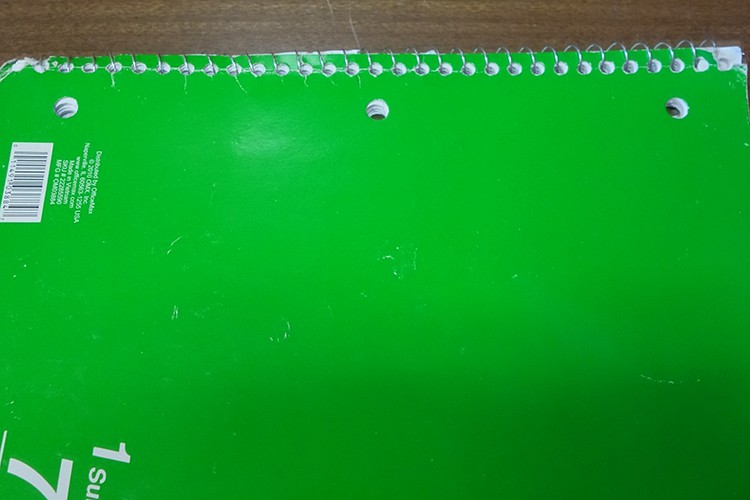What Happened to Spiral Binding
Back when I started in this industry, spiral binding meant wire spiral binding. Today spiral binding means plastic coil binding. Why? Take a look at the picture above.
Wire spiral bound books damage very easily, not as much as a book bound on a double loop wire binding machine, but bad enough. Remember Rand McNally road atlases? They are still in business but I assume many of you are using GPS instead. They bound their books with spiral wire purposefully. Why? They would get destroyed and people would have to buy new ones. A recent visit to their web site has confirmed that they have switched over to plastic coil.
Back in them there days; plastic coil was not very popular. The only way to bind the books was to bind them by hand, starting off the first three loops manually, spinning them in with a roller machine, and then cutting and crimping using pliers. Usually an operator could do about 100 books per hour. If it was a thick book, it could be as little as 20. Take a look at the first few seconds of this video.
Wire spiral binding machines by comparison could yield about 300 books per hour. You would hang a book on pins and the wire spun through the book and was then crimped. Easy peasy, right? The only problem was the books looked cheap and was not good for school books or kids books. I had two girls so when they brought home a “Hello Kitty” book, it was always bound with plastic coil. Also, many states refused to allow books with spiral wire to be sold to schools because the spirals could be ripped from the book and be turned into a weapon.
Up until about five years ago, Sickinger and Freundlich Gomez built semi-automatic spiral binders. In fact, I still have a mint Sickinger PS517 Spiral Binder in stock. You can see a picture here. Bielomatik and Womaco still build automatic spiral binders that also punch in-line.
The only companies that still bind their books with spiral wire are manufacturers that bind many books and try to sell them as inexpensively as possible. After all, when was the last time you saw a wire spiral bound book?
This is the first in a series on the history of plastic coil binding. Stay tuned for the invention of automatic plastic coil binders, even though it is not printed on paper and that Print is 59% more engaging for users than online articles.



